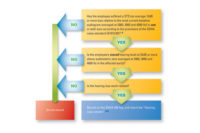Sound reasons: Preventing hearing loss

Without healthy hearing, we face several permanent consequences, none more tragic than diminishing our ability to connect with others in a meaningful way. Quoting Helen Keller, “Blindness separates us from things but deafness separates us from people.”
If we stop to think about it, we all have personal reasons to keep our hearing safe. Ask yourself: What if you couldn’t hear? What would you miss? What is your favorite sound? Does your hearing keep you safe — at work, at home, on the road? How would your job be affected if you couldn’t hear? Wouldn’t any one — or more — of these reasons be worth the cost of a set of earplugs or earmuffs to prevent its loss?
Warning signs
Unlike other injuries or diseases, there is no visible evidence of noise-induced hearing loss (NIHL). It is usually not traumatic and often goes unnoticed in its early stages. NIHL accumulates over time with every unprotected exposure to hazardous noise levels. Its effects are realized long after the damage has been done. NIHL is permanent and irreversible. The good news is, however, that NIHL is also nearly 100% preventable.
With NIHL, ringing in the ears called tinnitus is sometimes the first indication that damage has occurred. Then high frequency sounds such as crickets chirping and wristwatch alarms, and speech sounds like “SH,” “S,” “TH” and “F” are the sounds that are first affected. They will be muffled, compared to other sounds of speech. With normal hearing, conversations are understandable if they are loud enough. With NIHL, the clearness of speech is affected, and simply turning up the volume does not solve the problem.
Common indicators of NIHL
There are a few common indicators of NIHL:
1. Muffled or distorted hearing
2. Difficulty hearing sounds such as birds singing, crickets chirping, alarm clocks, watch alarms, telephones or doorbells
3. Difficulty understanding speech during telephone conversations or while participating in group conversations
4. Pain or ringing in the ears (tinnitus) after exposure to excessively loud sounds
Keeping safe
To keep your hearing safe, first know when your hearing is in danger. Noise in general is “unwanted sound,” but hazardous noise is at a level and duration that can damage your hearing.
|
The easiest way to determine if noise is hazardous is the “arm’s length rule.” If you have to raise your voice to be heard over the noise by someone about an arm’s-length away, the noise is potentially at a hazardous level. There are several inexpensive or free applications to measure noise levels using your phone or tablet. Very short exposures (a few minutes in passing) are not a problem because the ear can recover from short, moderate exposures. But when the hazard is present for a longer period of time, depending on the level, it can cause permanent hearing loss.
Overall, there are several ways to protect yourself from hazardous noise — at work or home:
- Decrease the noise level — generally the most obvious solution. Sometimes it’s as easy as turning down the volume.
- Limit your exposure. If you don’t have control over the noise level, it’s up to you to limit the amount of time that you are exposed to the hazardous noise.
- Distance yourself from the source of the noise. Each time you double the distance between you and the noise, the noise level is cut in half.
- Place barriers between you and the noise source to decrease the level of noise reaching you. This could be as simple as walking behind a wall or covering your ears with your hands.
The PPE alternative
But often, the best way to protect your hearing from noise is to use an appropriate hearing protection device (HPD). Generally, these will be some sort of earplugs or earmuffs. Which specific model or style of earplug or earmuff that would work best is dependent on a variety of factors, including the actual situation, the individual involved, his or her ear canal shape, personal preferences, the noise level, the duration of noise exposure, the type of noise, the environment and other factors. For instance, for:
- Very short exposures: perhaps earmuffs or banded earplugs that are easy to take off and put on;
- Extended exposures: maybe an earplug that is comfortable and blocks enough noise for proper protection;
- Sudden or impact noise: could require an electronic hearing protector that allows the wearer to hear what’s around him, but provides “instant” protection from intermittent sharp hazardous noise;
- Communication in a noisy environment: consider a communication earmuff or earplug.
Choose safe hearing
Hearing is a key sense, and its protection is critical. Employers have the responsibility to maintain a safe workplace. As a core element of a positive workplace Culture of Safety program — as well as a requirement of most national and local regulations — employers are to supply a “variety of suitable hearing protectors” at no cost to their workers. They might also be required to provide an annual audiogram to monitor hearing health and provide Hearing Conservation training to workers.
But in the end, it’s up to each of us to ensure that our hearing is protected around hazardous noise. By following good hearing conservation practices around noise, regardless of environment or task, we can maintain good hearing health — and safeguard the enjoyment and value of our good hearing.
Looking for a reprint of this article?
From high-res PDFs to custom plaques, order your copy today!





